The Byzantine style, like Gothic, Georgian, and Art Deco, is another wonderful experiment in that great laboratory called the Greco-Roman tradition. Constantine planted the seed when he moved the capital of his empire from Rome to Byzantium. At that time, owing to its history, the tradition in Byzantium would likely have been Greco-Roman with a Persian flair. Constantine set the Greek craftsmen practicing there to work on monumental projects the scale of which they had never seen, and he made New Rome the greatest city in the empire.
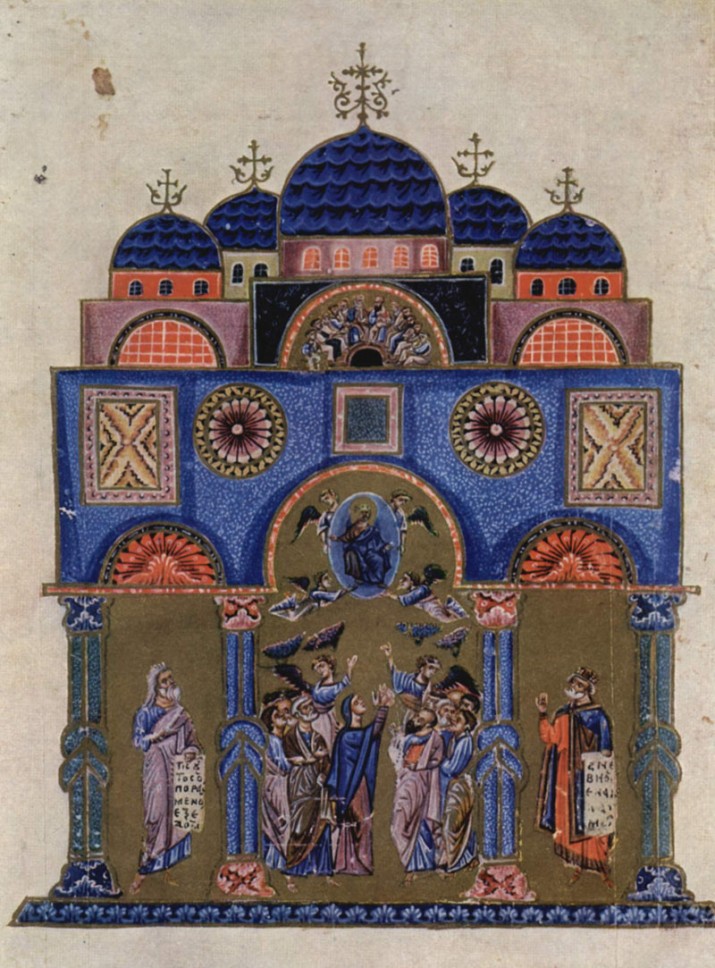
The Church of the Holy Apostles, here depicted in an illuminated manuscript, was built by Constantine as a tomb for himself with relics of the twelve apostles. Rebuilt by Justinian, it was the most important church in Christendom after the Hagia Sophia.
Over time the Byzantine style matured as two potent ideas, one architectural and the other theological, led to its two characteristic features. They are the pendentive, and the concern about idolatry.
The Pendentive
The pendentive was the invention of the brilliant architects and masons of Constantinople who wanted to figure out a way to unite the monumental Roman dome with the traditional basilican plan and cruciform plan. The problem they had was that the only way anyone knew how to support a dome was to set it upon a circular or polygonal plan, as at the Pantheon, for example. For it is impossible to build a dome on top of a cube out of masonry.
Imagine the volume above built out of brick. The bricks defining those flat wedges at each of the corners next to the dome would fall instantly to the ground. So they had to devise a way to mediate between the dome and the cube so that, brick by brick, the forces of gravity would be transferred smoothly down to the ground. Here is how it was done.
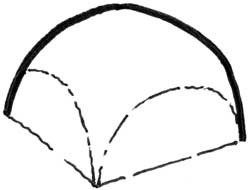
Step 2: Take four slices out of the hemisphere such that each slice meets the next at a point. (This volume is called an umbrella dome.)
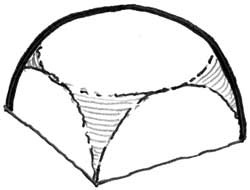
Step 3: Slice off the top. Voilà, you are left with a volume which is circular on top, and square on the bottom. The shaded areas are the actual pendentives which are doing all the heavy lifting.
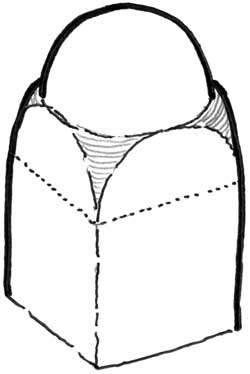
Step 4: Now you can add a hemispherical dome to the top, and a cube on the bottom. Perfect for a church crossing.
Thanks to the invention of the pendentive, the Byzantines were able to build the Hagia Sophia and its many offspring. Aside from the symbolic value of the monumental dome, there is also the practical advantage that comes with roofing a building with masonry instead of timber trusses: fire protection. The masons in the region had already developed by this time the ability to build small domes without centering, or temporary supports (this little video will give you an idea how). The monumental dome would have been the natural ambition for them.
Domes were often arrayed in a quincunxial pattern. For the sake of formal coherence with the dome motif, its close relatives the vault and the arch play supporting roles (no pun intended!). Rather than the usual entablature spanning a colonnade then, one finds rows of arches lined up liked camels in a caravan. Horizontal lines in general are muted.
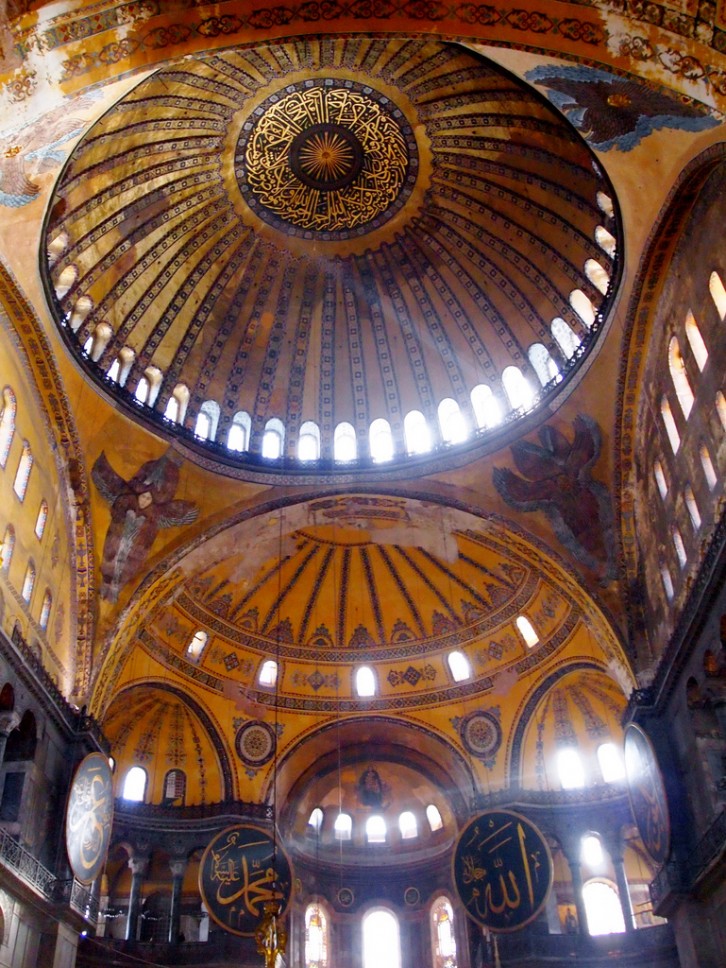
The pendentives of the Hagia Sophia are decorated with Seraphim, the highest of the choirs of angels, with six wings and many eyes (Revelation 4:8). They support the dome of Heaven.
[Image source]
The Concern About Idolatry
The second idea which dominated Constantinople was the concern that sculpture smacked of idolatry. Even before Iconoclasm reared its ugly head there was, and is, in the East a certain prejudice against solid statues. And it explains why one sees so few sculptures in eastern rite churches, even today.I believe this concern also explains the second feature of the Byzantine style, namely the flatness of the architectural ornament. Compare these two column capitals. The first (from the Pantheon) is relatively classic, with fully sculpted, very three-dimensional, acanthus leaves, volutes, fleurons, etc.
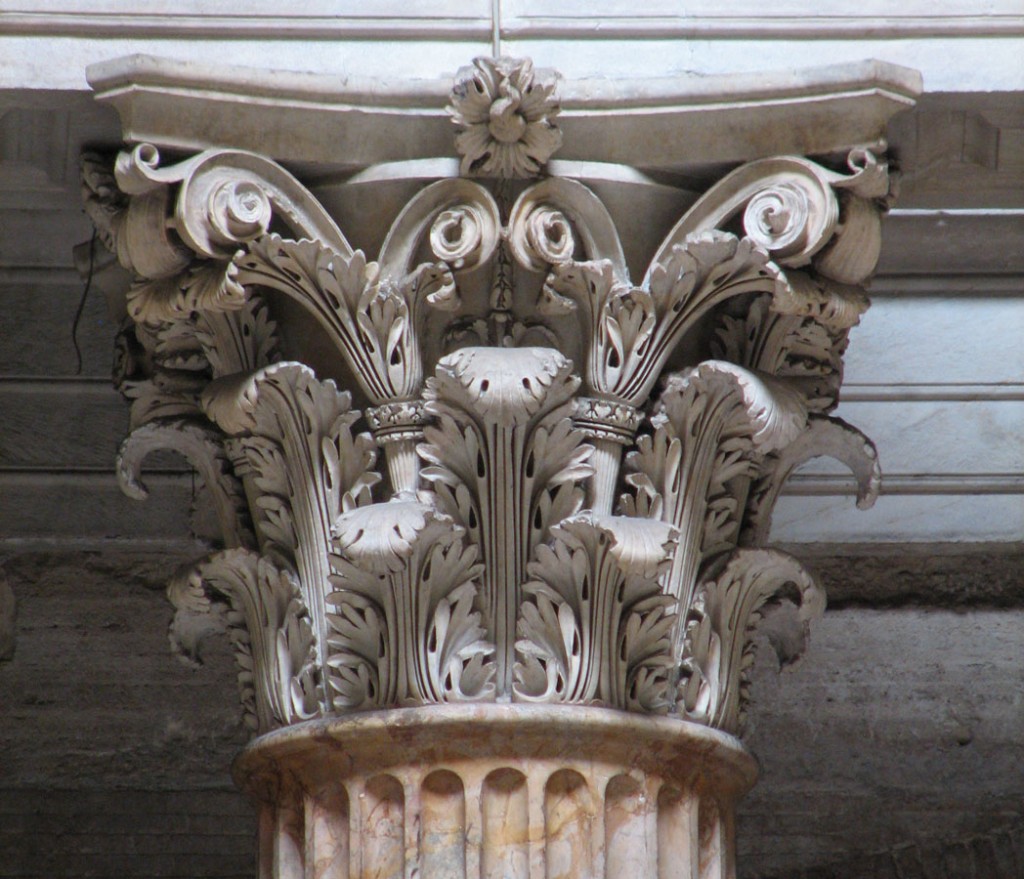
Corinthian capital from the Pantheon. Note the pronounced three-dimensionality of the individual leaves.
[Image source]

Composite capital at the Hagia Sophia. Note that the leaves are defined by a minimal carving out of their outline, preserving the overall bowl shape.
[Image source]
The restriction of sculptural relief is also evident in what horizontal banding there is in these buildings. Where a Roman would have built a strongly projecting cornice, the Byzantine builds a modest band.
The palpable absence of sculptural form, which by nature symbolizes high status, has to be compensated for. The buildings at the top of the pecking order in the city, the churches, have to look like they are “that than which nothing greater can be built.” So, they are profusely decorated in mosaics and frescoes instead.
The Byzantine Style Today
The style spread with the institutions associated with it. In the East, it is practically the definitive style of the Orthodox, having traveled through the Ukraine and across Russia till it reached North Korea in 2006. In the West it spread as far as Venice (especially the glorious Basilica of St. Mark, above), Ravenna, and even Rome to some degree, until the Great Schism and the fall of Constantinople took the wind out of its sails. It picked up again only in the 19th century. Westminster Cathedral in London is perhaps the most important example (though it’s not up to the standard of its forebears).
Today it is gaining somewhat in popularity in the West, and understandably so. (It’s even inspired famed fashion designer Karl Lagerfeld.) The concern about solid sculpture hampered the Byzantine artist and architect, restricting possibilities for expression. Yet, their coherent response to the problem produced a beautiful style which we cherish today even in the absence of that restriction. For those of the Latin Rite persuasion, it is associated not with a concern for idolatry, but with a young Church armed with simplicity, energy, and a zeal for conversions in pagan lands.

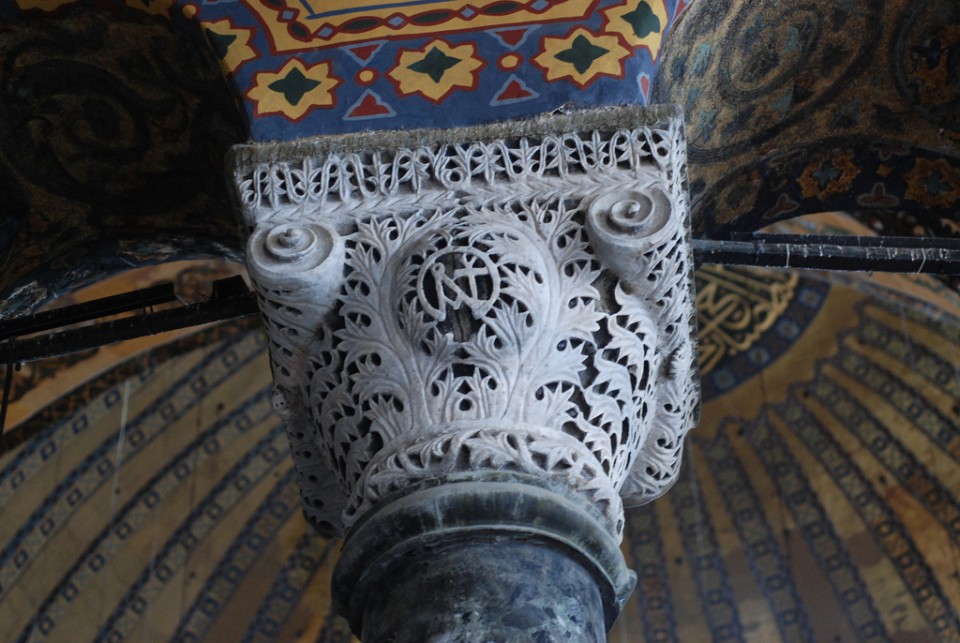



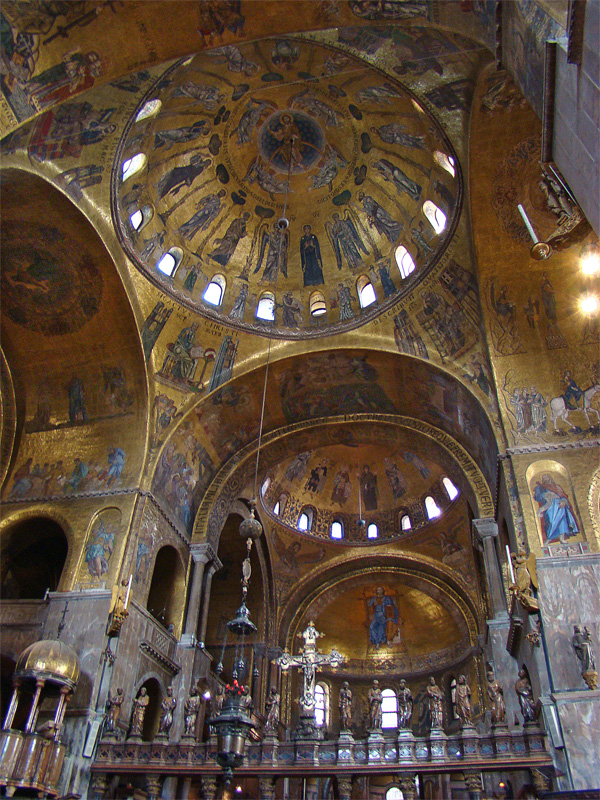
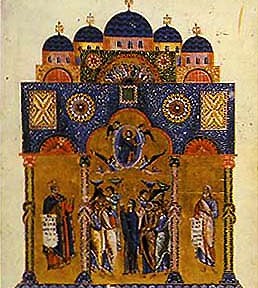

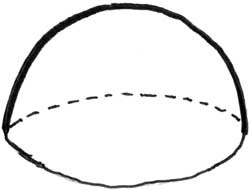


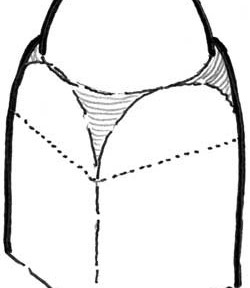
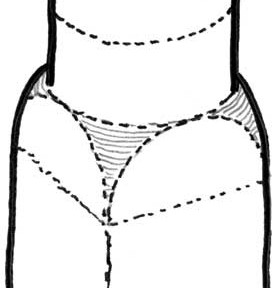
![The pendentives of the Hagia Sophia are decorated with Seraphim, the highest of the choirs of angels, with six wings and many eyes (Revelation 4:8). They support the dome of Heaven.
[Image source]](https://www.marcantonioarchitects.com/blog/wp-content/uploads/2011/08/hagia_sophia_dome.jpg.scaled500-500x288.jpg)
![Corinthian capital from the Pantheon. Note the pronounced three-dimensionality of the individual leaves.
[Image source]](https://www.marcantonioarchitects.com/blog/wp-content/uploads/2011/08/pantheon_corinthian.JPG.scaled500-500x288.jpg)
![Composite capital at the Hagia Sophia. Note that the leaves are defined by a minimal carving out of their outline, preserving the overall bowl shape.
[Image source]](https://www.marcantonioarchitects.com/blog/wp-content/uploads/2011/08/hagia_sophia_composite_capital.jpg.scaled500-500x288.jpg)
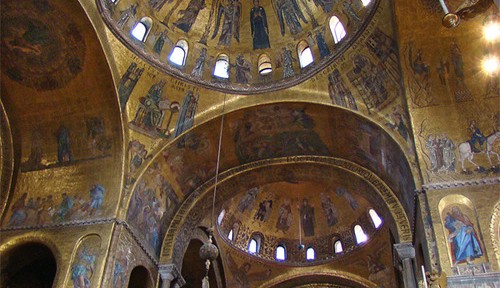
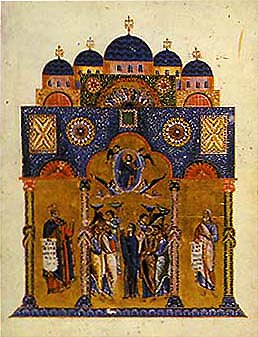
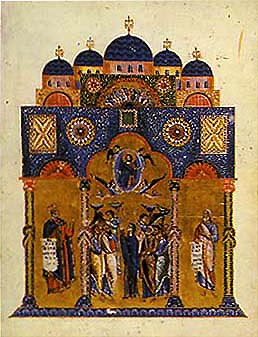
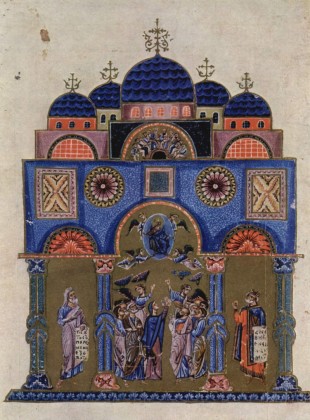
![The pendentives of the Hagia Sophia are decorated with Seraphim, the highest of the choirs of angels, with six wings and many eyes (Revelation 4:8). They support the dome of Heaven.
[Image source]](https://www.marcantonioarchitects.com/blog/wp-content/uploads/2011/08/hagia_sophia_pendentives-310x420.jpg)
![Corinthian capital from the Pantheon. Note the pronounced three-dimensionality of the individual leaves.
[Image source]](https://www.marcantonioarchitects.com/blog/wp-content/uploads/2011/08/Pantheon-Corinthian-310x420.jpg)
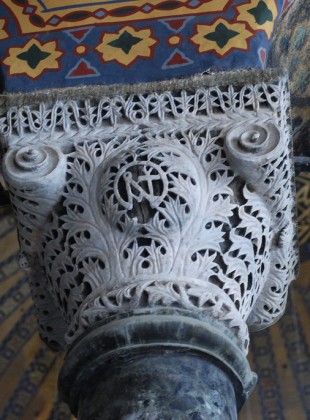
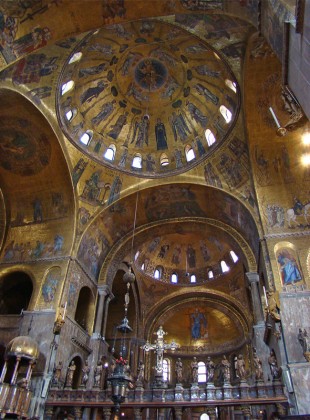
There’s something arresting and palpable about the obvious way Byzantine architecture brings order to the natural world. Rather than hiding behind layers of sculpture, relief, and decoration, the Byzantine almost smacks you in the face with its reasonableness and order–it’s nearly ostentatious imitation of the Heavenly Jerusalem as pictured in Revelation.I’ve just done a post hitting on this topic over at popsophia.blogspot.com called “What Does Heaven Look Like?”